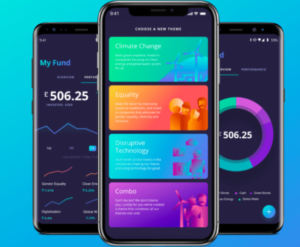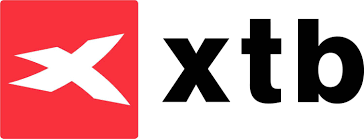*tickr rebranded to CIRCA5000. CIRCA5000 shut its platform business in February 2024. Customers can't buy or sell ETFs via CIRCA5000 anymore and existing customers will be transferred over to AJ Bell. CIRCA5000 will instead focus on the five ETFs it launched in 2023*
What is tickr?
tickr is an investment app that aims to bring impact investing to a mass market, riding the wave of interest in ethical investing. It is aimed squarely at "millennials", with 90% of users being first-time investors within the 24-39 age bracket.
It claims to combine jargon-free simplicity with the potential to make a difference to the future of the planet through impact and sustainable investing. Its undoubtedly attractive user-friendly interface, and the ability to invest in companies that are actively committed to tackling climate change, promoting equality and developing new technology, gives it some serious download appeal.
tickr is a fledgeling company having launched in January 2019 and has already raised more than £3m, funded in part by a round of crowdfunding on Seedrs, as well as seed funding from within the investment industry. Its business model is quite straightforward, allowing individuals to invest as much or as little as they want within designated portfolios that reflect tickr's main impact investment themes.
While the appeal of tickr is obvious - it makes socially responsible investing simple - there are drawbacks. First, the use of a limited range of ETFs (managed externally by BlackRock, Rize ETF and Legal & General). Second, with impact investing still in its infancy, tickr's promise to allow people to invest ethically without sacrificing performance has yet to be thoroughly tested. There are a number of studies that show that investing ethically doesn't mean that you have to give up investment performance, but that research looks at the entire universe of investments, most of which are actively managed (i.e. not passive ETFs). Whether tickr can achieve the same feat with a limited number of investment options is not guaranteed.
In addition, the fee structure for tickr throws up problems for those looking to invest smaller amounts, as we shall explain later in the article.
How does tickr work?
The tickr mobile app allows users to progress from downloading the app to starting their investment journey within a few minutes by following a series of simple steps:
Step One: Choose your account type
tickr currently offers investments through the following vehicles:
- A Stocks and Shares ISA - this allows you to invest up to £20,000 per year, tax-free. You need to bear in mind that you can't have opened another Stocks and Shares ISA in the same tax year.
- A General Investment Account (GIA) - you can invest an unlimited amount in a GIA, but you will be liable for Capital Gains Tax. It is typically chosen by investors who have already used up their ISA allowance.
- A Junior ISA (JISA) - allows you to save up to £9,000 per year for your child, tax-free. The child is given access to the account when they are 18. At the moment, tickr only allows you to set up a JISA if you already have an ISA or GIA with them, although it is planning to allow JISA-only accounts in the near future. It also has plans to launch a SIPP, which would allow a tax-efficient way to invest to fund retirement.
Step Two: Choose your theme
tickr currently offers three investment themes, supported by a number of sub-themes, which help to bolster diversification by investing in a greater number of underlying companies:
- Planet: This theme taps into the movement away from fossil fuels towards renewable energy sources, as well as agricultural technology and streamlined water management. Its sub-themes are Global Clean Energy, Sustainable Future of Food, and Global Water.
- People: This theme - divided into Pharma Breakthrough, Digital Learning & EdTech, and Cybersecurity & Data Privacy - addresses pharmaceutical innovation, educational technology, and online security.
- People & Planet: This option provides a combination of Global Clean Energy, Sustainable Future of Food, Global Water, Pharma Breakthrough, Digital Learning & EdTech, and Cybersecurity & Data Privacy to provide a degree of exposure to all of the main themes.
Each theme is populated by ETFs that reflect the sub-themes. Investors will also have a proportion of their portfolio allocated to bonds or held in cash, depending on their chosen risk level. This provides diversification but will also have an impact on potential performance.
Step Three: Choose your risk level
After you have chosen your investment theme, you are directed to select your risk level. The three risk levels are:
- Cautious: if you're aiming for modest growth whilst minimising risk.
- Balanced: if you're targeting modest growth but are willing to accept higher risk.
- Adventurous: if you're aiming for higher growth by taking on higher risk.
tickr provides a brief explanation of what the risk levels mean, suggesting that taking higher risk means your investment is likely to move up and down a lot more than if you opt for a lower-risk option. It points to the fact this isn't designed as a short-term investment option but, if you have a longer time horizon, you may be able to tolerate a higher level of risk.
Once you have made your selection, it gives you a visual representation of the breakdown of your portfolio, including the weighting to government bonds, green bonds, and cash, as well as the split across the various sub-theme ETFs.
When I initially used the app in 2020, I had a number of concerns. There is no doubt that tickr strips back the jargon to make placing an investment easy, but therein lies a problem. In my view, some of that "jargon" is needed when making an investment decision. Everything within tickr happens through the app, but the app's focus appeared to be to push you through the journey in a linear fashion until you make an investment. I personally found it difficult to find the underlying factsheets for the ETFs within each portfolio. Links to them were there, of course, but not easy to find and hidden away at the bottom of a screen.
Whenever I make an investment choice, I will always alter my risk profile to see how the portfolio is impacted and look at the funds suggested. However, after choosing an Adventurous risk portfolio, I changed my mind and chose the Balanced portfolio. But I could see no way of then viewing what the balanced portfolio looked like as the app wanted me to just continue forward towards investing money. Now, this could have been a user-error on my part, but I've been doing this for 20 years and had never come across a situation where I could end up investing in something that I don't know about, through user error or by design. This was a real concern for me.
However, fast-forward to 2021, and tickr have made some major changes to their app. Once you have selected your theme, your risk level, and reviewed the weighting of your investments, you are now taken to a page which includes links to PDF factsheets for each investment sub-theme. These documents are provided by the external company responsible for managing the fund (e.g., for the Global Water sub-theme, the document is provided by overarching fund manager, Legal & General), and contain key policy directives, risk & reward profiles, past performance indicators, as well as a breakdown of fees and charges.
There are also factsheets for green and government bonds so you can see exactly who is responsible, and what you can expect, for the entirety of your investment portfolio. The ambiguity that I was previously concerned about has been addressed, and the changes have significantly improved not just tickr's transparency, but also the user experience, as it is now easier to do your own research and make informed decisions about your investments using the factsheets without having to trawl the internet. All the key information you need is now contained within the app.
Is tickr safe?
Although tickr is relatively new, it is authorised and regulated by the Financial Conduct Authority and, in addition, is covered under the Financial Services Compensation Scheme, which means your investments are protected up to £85k. It has also invested in appropriate levels of security, which ensures your data is encrypted and protected.
It is important for users to realise, however, that tickr is an investment platform and, as such, is not authorised to give people advice on how they should be investing. This means that decisions about risk appetite, the amount to invest and the theme to invest in are all the responsibility of the individual investor.
In addition, as with other investment companies, it does not offer any guarantees that the value of your investment will go up over time.
How much do you have to invest in tickr?
As part of tickr's plan to open up impact investing to a wider audience, it allows people to set up an account with as little as £5. There is then the option to invest monthly and/or to top up your account on an ad hoc basis. You can even connect your bank account so that it round-ups each transaction to the nearest pound and invests the change for you, in the same way that Moneybox does. This is undoubtedly attractive to its millennial target market, who may not want to commit to a larger monthly sum. However, the issue investors face is that - if you only invest a relatively small amount - the fees tickr charges can very quickly eat up any investment returns. This is a point we will go on to discuss later in the article.
This tension between the low commitment in terms of minimum investment and the problematic flat-fee structure is the biggest flaw with tickr and could easily put off previously-enthusiastic clients as they see their investments slowly eroded over time by the fees. Sadly, this issue isn't unique, with competitor Moneybox - which has a similar structure but without the all-out focus on impact investing - coming up against the same problem. You can read more about that in our review "Moneybox Review - Is it the best investment app".
What fees does tickr charge?
As previously discussed, the fees are a sticking point with the tickr proposition. While to the uninitiated, a flat-fee of £1 per month may not seem much, if you only have a small amount invested - say, less than £100 per month - it will very easily wipe out any potential returns. It really is necessary to invest a minimum of £100-£150 per month - £1200-£1800 per year - to get the fees to a reasonable level of less than 1% of the investment.
It is also worth bearing in mind that, once your account reaches £3,000, you will charged an additional 0.3% on the balance of your account over that threshold. There is also the management cost of the underlying investments to factor in, which range between 0.45-0.65%, depending on the theme you choose.
As part of a rejig of the ETFs that it offers earlier in 2021, some of the ones that tickr pushes at the moment have relatively high fees (compared to the average ETF charge of 0.53%). Coupled with the fee that users are already paying tickr for using the app, this could eat away at close to 1% of of your investments over the course of a year.
What returns can I expect from tickr?
tickr initially didn't advertise the returns you were likely to get from any of the themes or at the various risk levels - other than to say that impact investing should not mean compromising on performance - but the new ETF factsheets now include past performance data as well as risk & reward profiles to help investors determine how their investments might shape up in the future.
The results of funds in each of tickr's sub-themes are shown in the table below, with the times when the ETF has outperformed its peer group average shown in green, and the times it has underperformed in red:
Performance of the ETF in the tickr Sustainable Future of Food theme:
| Fund | 1-year (%) | 3-year (%) | 5-year (%) | 10 year (%) |
| Davy Rize Sustainable Future of Food UCITS ETF | n/a | n/a | n/a | n/a |
Performance of the ETF in the tickr Global Clean Energy theme:
| Fund | 1-year (%) | 3-year (%) | 5-year (%) |
10-year (%)
|
| iShares Global Clean Energy UCITS ETF | 56.19 | 138.63 | 178.35 | 105.67 |
Performance of the ETF in the tickr Clean Water theme:
| Fund | 1-year (%) | 3-year (%) | 5-year (%) | 10-year (%) |
| L&G Clean Water UCITS ETF | 28.09 | n/a | n/a | n/a |
Performance of the ETF in the tickr Cybersecurity & Data Privacy theme:
| Fund | 1-year (%) | 3-year (%) | 5-year (%) | 10-year (%) |
| Davy Rize Cybersecurity and Data Privacy UCITS ETF | 17.03 | n/a | n/a | n/a |
Performance of the ETF in the tickr Digital Learning & EdTech theme:
| Fund | 1-year (%) | 3-year (%) | 5-year (%) | 10-year (%) |
| Davy Rize Education Tech and Digital Learning UCITS ETF | n/a | n/a | n/a | n/a |
Performance of the ETF in the tickr Pharma Breakthrough theme:
| Fund | 1-year (%) | 3-year (%) | 5-year (%) | 10-year (%) |
| L&G Pharma Breakthrough UCITS ETF | -2.33 | 21.82 | n/a | n/a |
In summary, the performance figures highlight the point that many passive ETFs in the impact investing space are relatively new and, as such, are unproven over a longer period encompassing different market conditions. Indeed, the ETFs underpinning both the Sustainable Future & Food and Digital Learning & EdTech themes don't have a 1-year track record yet. That said, the Global Clean Energy theme has performed strongly and seems the most compelling option at this moment in time.
What are the advantages of tickr?
- The slick, user-friendly app is easy to navigate and allows you to open an account and start investing very quickly.
- It's set up to allow you to target investment in companies that match your personal values and beliefs, marrying the possibilities of potential financial gain with trying to make a difference to the future of the planet.
- It's designed to be jargon-free and strips away a lot of the factors that can put new investors off, which include complicated terminology, confusing charts and graphs, and a complex charging structure.
What are the disadvantages of tickr?
- It doesn't provide regulated investment advice on the most suitable portfolio for you - you have to simply choose one off of a limited menu.
- The use of ETFs - while efficient and cost-effective - is limiting, with other fund-types perhaps lending themselves better to more targeted stock selection and asset allocation in the individual themes.
- The £1 per month flat-fee is likely to have a disproportionately negative impact on returns for those with smaller investment pots.
What are the alternatives to tickr?
There are a growing number of apps that are designed to make investing simple and to attract customers who are new to the world of investments. As previously mentioned, Moneybox is probably the nearest comparable offering to tickr, although savings and investments app Plum also has some similar features.
tickr versus Moneybox
The central idea behind Moneybox is of rounding up your spending on day-to-day purchases to the nearest pound and saving or investing the extra money. It's a nice way to make small, incremental contributions to a savings pot that can quite quickly add up without you really noticing. With the investment option, you can choose to invest your round-ups and/or top up the total amount with one-off payments or more regular contributions.
Like tickr, the Moneybox investment account can be set up as a Stocks and Shares ISA, a GIA, or a JISA, while it also offers a Lifetime ISA and pension option. It also has a specific socially responsible investing account, which has similar impact investing objectives to tickr. Both tickr and Moneybox use passive funds to populate their portfolios.
In terms of which is better, they both share the common problem of a £1 monthly fee, which threatens to wipe out returns for those investing smaller amounts. Apart from that, there is little to separate them, other than the slight "gimmicky" feel of the Moneybox round-up feature compared with the slightly more sophisticated approach of tickr. However, Moneybox benefits from offering Lifetime ISA and pensions accounts, which tickr are yet to branch out into.
Find our full Moneybox review here.
tickr versus Plum
In much the same way as Moneybox, Plum is designed to encourage people to make regular saving a habit, in this instance by using an algorithm to analyse your spending and work out how much you can afford to put away each month, as well as offering a round-up option, and other tools.
Like both Moneybox and tickr, Plum also has an investment option. It is centred on 12 different portfolios, which range from a high-risk, high-return Tech Giants fund through to a Slow& Steady fund, which has a lower risk profile and 20% invested in bonds. While it has a Clean & Green fund, there is nowhere near the level of choice of impact investment themes as provided by tickr.
In common with both Moneybox and tickr, the fee structure is also problematic, with a £1 monthly fee for the standard investment option or - alternatively - a £2.99 monthly fee for Plum Plus, which includes access to a greater number of tools to encourage more effective saving.
To find out more about Plum, read our review.
Should I invest with tickr?
If you are new to investing and are looking for a way to invest in line with your principles, tickr has many advantages. It is undeniably easy-to-use, can be managed from your mobile, and doesn't require a huge financial commitment. Are the fees an issue? Yes, they could have a significant impact on smaller investment pots. However, for the target audience who are looking for a minimal-fuss first step into impact investing with the option to add funds to the account as and when it suits them, it has some definite appeal.






